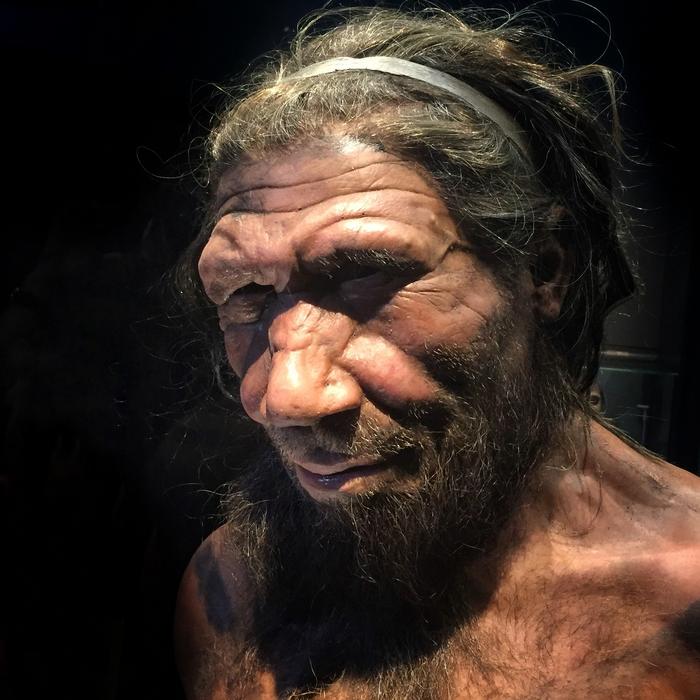The Inner Ear Reveals Neanderthals May Have Went Through Great Genetic Loss
Posted on Categories Discover Magazine

Ears are incredible things. They help us process sound and play a significant role in our balance. They may have also just helped researchers gain a better understanding of Neanderthal evolution.
Neanderthals emerged around 250,000 years ago from pre-Neanderthals populations (500,000 years to 250,000 years ago). These populations roamed Eurasia. For years, researchers believed that as pre-Neanderthals evolved into early Neanderthals and then into classic Neanderthals, there was little evolutionary change.
However, new findings published in Nature Communications may shake up this commonly-held belief, and the analysis of Neanderthal ears shows there may have been great genetic loss during this evolutionary period.
A Neanderthal Bottleneck
After a research team from Spain collected DNA samples from Neanderthal fossils, they noticed a genetic loss between early Neanderthals and classic Neanderthals.
This type of genetic loss is called a bottleneck and is the consequence of population reduction. According to the data collected, this particular bottleneck began about 110,000 years ago.
Before this bottleneck, some researchers believed there was a similar event that led to the development of Neanderthal DNA from pre-Neanderthals. Because of this, many scientists believed that early and classic Neanderthals had a lower genetic diversity than their pre-Neanderthal ancestors.
Read More: 10 of the Most Important Neanderthal Fossil Discoveries
Looking Back with the Inner Ear
Alessandro Urciuoli from the Institut Català de Paleontologia, Miquel Crusafont from the Universitat Autònoma de Barcelona, and Mercedes Conde-Valverde from the Cátedra de Otoacústica Evolutiva de HM Hospitales y la Universidad de Alcalá led a team of researchers who analyzed the semicircular canals — the fluid-filled canals with the inner ear that help us maintain our balance — of Neanderthals and measured the morphological diversity between them.
According to the study, the results of the morphological analysis are similar to those obtained through DNA comparisons.
For this study, the research team looked at two fossil collections. The first is from the Sima de los Huesos site of Atapuerca in Burgos, Spain, which is about 430,000 years old. It also makes up the largest sample of pre-Neanderthals available in the fossil record. The second is from Krapina, a site in Croatia with the most complete collection of early Neanderthals, which is about 130,000 years to 120,000 years old.
The team then compared the amount of morphological diversity between the two samples and noted surprising results.
Rearranging a Genetic Timeline
According to the study, the results show that classic Neanderthals had a lower morphological diversity of the semicircular canals than pre-Neanderthals.
“We were surprised to find that the pre-Neanderthals from the Sima de los Huesos exhibited a level of morphological diversity similar to that of the early Neanderthals from Krapina,” said Alessandro Urciuoli, lead author of the study, in a press release. “This challenges the common assumption of a bottleneck event at the origin of the Neanderthal lineage.”
The results show that a bottleneck event did occur, but likely not when researchers previously thought it had. These findings are a key part of helping further our understanding of Neanderthal evolution.
“By including fossils from a wide geographical and temporal range, we were able to capture a comprehensive picture of Neanderthal evolution. The reduction in diversity observed between the Krapina sample and classic Neanderthals is especially striking and clear, providing strong evidence of a bottleneck event,” said Conde-Valverde in a press release.
Read More: Reconstructing a Neanderthal Skull That Was Flattened Like a Pancake
Article Sources
Our writers at Discovermagazine.com use peer-reviewed studies and high-quality sources for our articles, and our editors review for scientific accuracy and editorial standards. Review the sources used below for this article:
A graduate of UW-Whitewater, Monica Cull wrote for several organizations, including one that focused on bees and the natural world, before coming to Discover Magazine. Her current work also appears on her travel blog and Common State Magazine. Her love of science came from watching PBS shows as a kid with her mom and spending too much time binging Doctor Who.